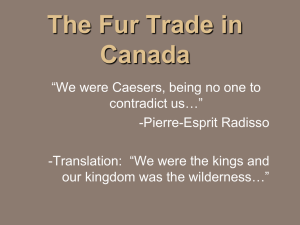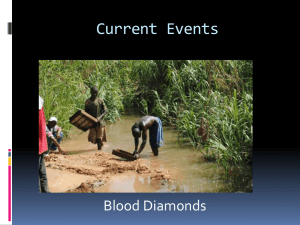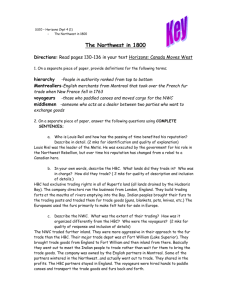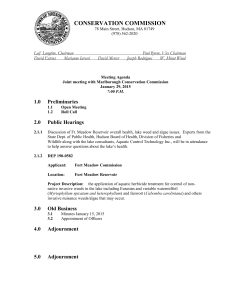canwest1key
advertisement
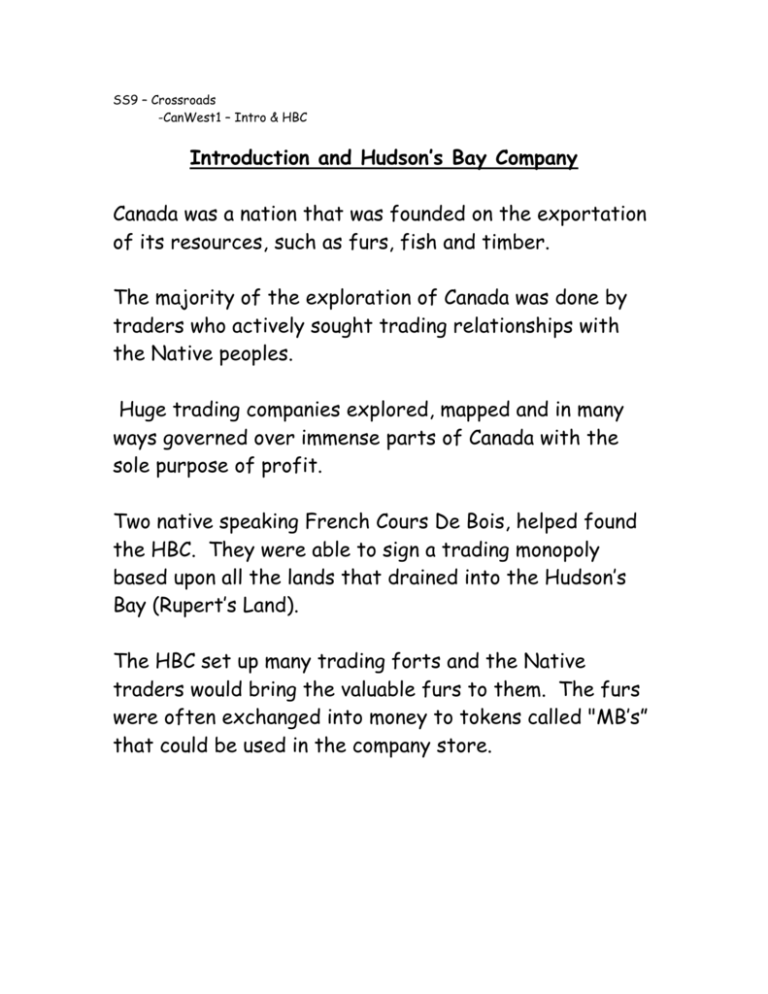
SS9 – Crossroads -CanWest1 – Intro & HBC Introduction and Hudson’s Bay Company Canada was a nation that was founded on the exportation of its resources, such as furs, fish and timber. The majority of the exploration of Canada was done by traders who actively sought trading relationships with the Native peoples. Huge trading companies explored, mapped and in many ways governed over immense parts of Canada with the sole purpose of profit. Two native speaking French Cours De Bois, helped found the HBC. They were able to sign a trading monopoly based upon all the lands that drained into the Hudson’s Bay (Rupert’s Land). The HBC set up many trading forts and the Native traders would bring the valuable furs to them. The furs were often exchanged into money to tokens called "MB’s” that could be used in the company store. SS9 – Crossroads CanWest1 – Introduction & The HBC Introduction and the Hudson’s Bay Company Directions: Read pages 256-261 in your text Crossroads – A Meeting of Nations. 1. On a separate piece of paper, provide definitions for the following terms; Entrepreneur – one who carries out an enterprise economic imperialist - Imperialism is the domination of one country over another, politically, economically or culturally. Economic imperials refers to the economic domination. Capitalist – a person with capital or money to invest Rupert’s Land – the territory given to the Hudson’s Bay Company Made Beaver - a prime adult beaver fur used to gauge the value of all other furs. 2. On a separate piece of paper, answer the following questions using COMPLETE SENTENCES; a) Name 3 large fur trading companies of the 17th and 18th Century Canada. (2 mks for identification and use of complete sentences) 1. HBC, 2. NWC, 3. Company of a Hundred Associates b) Identify who were the two French Coureurs De Bois who helped start the HBC and describe the experience they brought with them to the company. (2 mks for identification and description of their experience) Radisson and Groseilliers – Raddison spoke Mowhawk and was their prisoner for a # of years, he know their customs, Groseilliers learnded form the natives oabout untouched land north of Lake Superior. They both explored the lands and became familiar with the opportunity of the fur trade in that area. c) What was the name of the trading territory given to the HBC and who gave it to them? (2 mks for details and quality of thought) Rupert’s Land all lands that drain into the Hudson Bay. The land was given to them by King CharlesII and his cousin Prince Rupert. d) What was the name of the head trader of the HBC posts and why was the summer an important time for the HBC trading forts. (2 mks for details and descriptions) Factor. Summer was the peak season to unload the supplies from England and trade for the furs the natives brought them. Then the furs had to be loaded onto the ships. The travel by canoe and by ship was dependant on the ice on the rivers and in the harbors. 3. On the map found opposite outline and shade in all of Rupert’s Land, trace the major western fur trade routes in RED and label the following; Hudson Bay James Bay Great Slave Lake Lake Winnipeg Lake Winnipegosis Lake of the Woods Lake Superior Lake Huron Lake Ontario St. Lawrence River York Factory Norway House Fort Garry Brandon House Cumberland House Edmonton House Nelson House Chesterfield House Moose Factory Chesterfield Inlet You will be marked out of ten for correct labeling and quality of work Total Marks : ____ / 23 3. On the map found below outline and shade in all of Rupert’s Land, trace the major western fur trade routes in RED and label the following; Hudson Bay James Bay Great Slave Lake Lake Winnipeg Lake Winnipegosis Lake of the Woods Lake Superior Lake Huron Lake Ontario St. Lawrence River York Factory Norway House Fort Garry Brandon House Cumberland House Edmonton House Nelson House Chesterfield House Moose Factory Chesterfield Inlet You will be marked out of ten for correct labeling and quality of work

